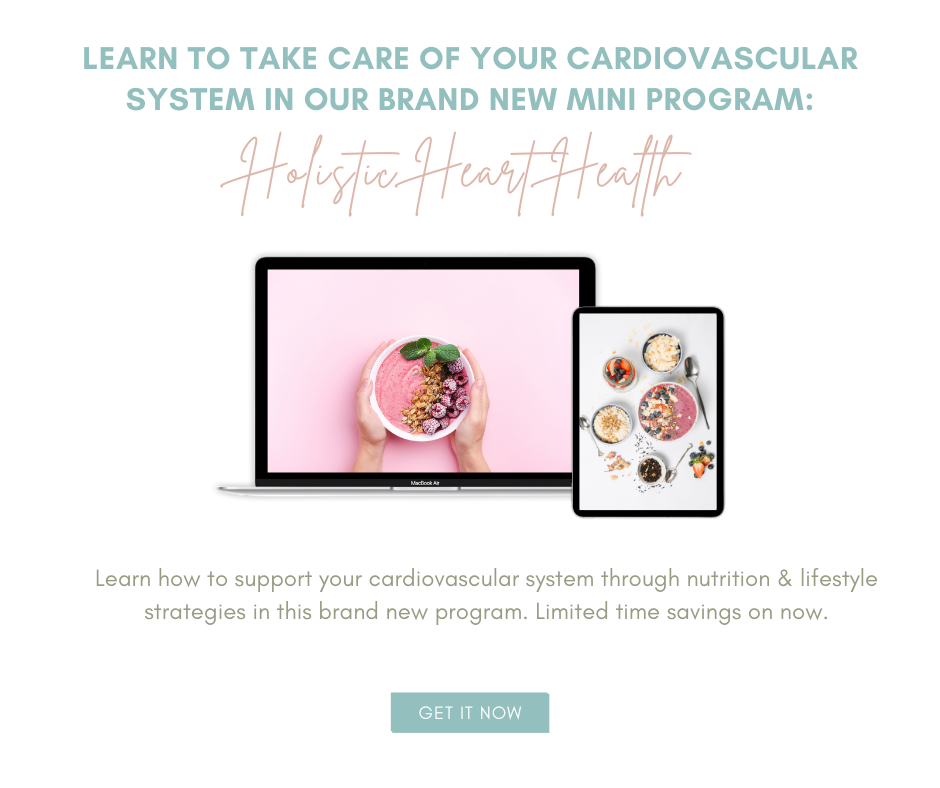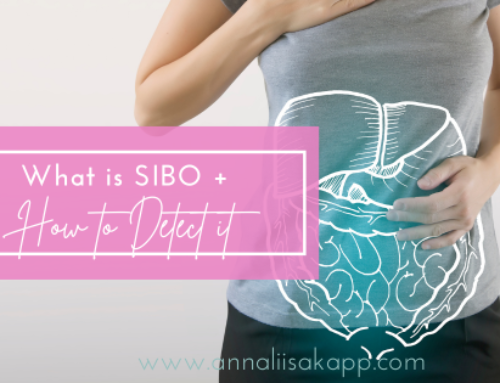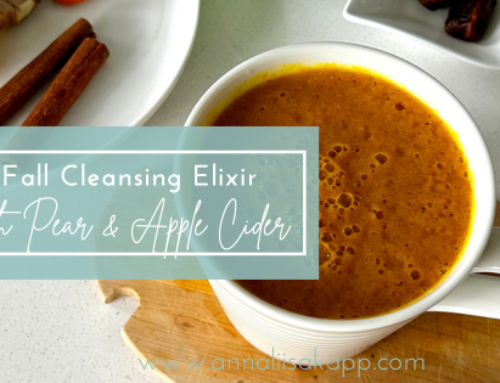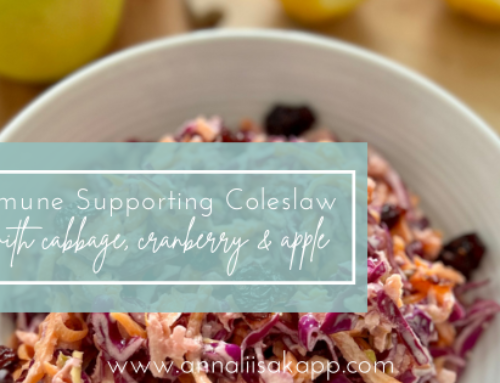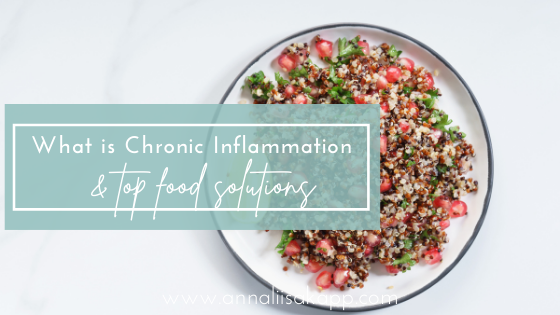
.
Inflammation. We hear this word a lot. Mostly as a negative connotation.
We know we must get the inflammation down, but where does it come from and what exactly does it all mean?
Scientists are measuring levels of inflammation in our bodies and finding that it can be pretty bad for our health, when it’s chronic (i.e. lasts a long time).
Inflammation has been linked to obesity, heart disease, Alzheimer’s, and diabetes, depression, chronic pain, arthritis, Irritable Bowel Syndrome, just to name a few.
.
But what exactly does it mean to have chronic inflammation?
.
Our inflammatory response takes place on a cellular level, and it’s a big part of our immune response. When our body experiences physical strain, injury or infection, our defense reaction steps in and tries to eliminate the agent and repair the damaged tissue. As a result, you might experience symptoms such as localized redness, swelling, heat and pain. In case of a viral infection, fever is an inflammatory response to eliminate the viral agent. This is what’s considered acute inflammation, which usually lasts for a few days and is a necessary part of the healing system.
Chronic inflammation, however, occurs when symptoms have been suppressed for too long and our body has been pushed beyond our natural limits without proper time and opportunity to heal. This can happen over weeks, months, and years. With chronic inflammation, the tissues are not repaired, and the sustained injury does not allow the inflammation to end. When our body can no longer adapt to the imposed stress or stimulus, cell injury or death occurs. This can happen locally (ex. in the lung tissue as vasoconstriction that leads to asthma) or systematically, leading to autoimmune conditions like Rheumatoid Arthritis & pain.
The symptoms may be mild but underlie a range of common health conditions that often go unnoticed until the signs and symptoms of a concerning health condition become more extreme or a diagnosis is made by a healthcare provider.
.
What are some early signs/symptoms of chronic inflammation?
Chronic inflammation affects everyone differently, depending on past injuries, your genetic variability, the organ systems affected, and ability to heal based on your current lifestyle.
Signs that you may be experiencing some inflammation include:
- cognitive health: brain fog, chronic headaches, low mood and poor memory
- skin: acne, eczema, rashes, premature aging of skin
- increased allergies, food sensitivities, and chemical sensitivities
- digestion: increased bloating, constipation, or loose bowels
- muscle or joint pain or weakness
.
What are the contributing factors for chronic inflammation?
- Toxins & toxic build-up lead to increased liver & kidney damage and cell injury (ex. alcohol, chemicals from personal care products, pesticides, etc)
- Unidentified and unaddressed food sensitivities, intolerances, or allergies leading to increased inflammatory response
- Chronic stress & emotional trauma as elevated adrenaline and cortisol lead to hormonal imbalance & inflammation
- Lack of quality sleep/routine sleep habits required to repair cells
- Proliferation of bad bacteria in the body
- Subclinical infections (e.g. periodontal disease)
- Blood sugar imbalance and insulin resistance
- Nutrient deficiencies & consumption of highly refined foods (ex. canola oil) impair the body to repair inflammation & weaken the immune response
.
Now that we understand the symptoms and causes or chronic inflammation, let’s focus on some foods packed with anti-inflammatory antioxidants that are proven to help reduce it. As with anything, inflammation has many root causative factors and you may need a more specific approach. The recommendations below are meant as a general guideline.
.
Here are my top anti-inflammatory food recommendations:
.
Anti-inflammatory Food #1: Berries, Grapes, and Cherries
Why save the best for last? Perhaps the most amazingly delicious anti-inflammatory foods are a sweet favourite of yours?
Berries, grapes, and cherries are packed with fiber, and antioxidant vitamins (e.g. vitamin C) and minerals (e.g. manganese).
Oh, and did I forget to mention their phytochemicals (phyto=plant)? Yes, many antioxidants such as “anthocyanins” and “resveratrol” are found in these small and delicious fruits.
In fact, berries, grapes, and cherries may be the best dietary sources of these amazingly healthy compounds.
Anti-inflammatory Food #2: Broccoli and Peppers
Broccoli is a cruciferous vegetable that contains the antioxidant “sulforaphane.” This anti-inflammatory compound is associated with reduced risk of heart disease and cancer.
Bell peppers, on the other hand, are one of the best sources of the antioxidants vitamin C and quercetin.
Just make sure to choose red peppers over the other colours. Peppers that are any other colour are not fully ripe and won’t have the same anti-inflammatory effect.
I pack these two super-healthy vegetables together in this week’s recipe (see below).
* If you are sensitive to the nightshade family of vegetables, try to avoid peppers
.
Anti-inflammatory Food #3: Healthy Fats (avocado, olive oil, fatty fish)
Fat can be terribly inflammatory (hello: “trans” fats), neutral (hello: saturated fats), or anti-inflammatory (hello: “omega-3s), this is why choosing the right fats is so important for your health.
The best anti-inflammatory fats are the unsaturated ones, including omega-3s. These are linked to a reduced risk of heart disease, diabetes, and some cancers.
Opt for fresh avocados, extra virgin olive oil, small fish (e.g. sardines and mackerel), and wild fish (e.g. salmon). Oh and don’t forget the omega-3 seeds like chia, hemp, and flax.
.
Anti-inflammatory Food #4: Green Tea
.
Green tea contains the anti-inflammatory compound called “epigallocatechin-3-gallate”, otherwise known as EGCG.
EGCG is linked to reduced risk of heart disease, certain cancers, obesity, and Alzheimer’s.
Drinking steeped green tea is great, but have you tried matcha green tea? It’s thought to contain even higher levels of antioxidants than regular green tea.
.
Anti-inflammatory Food #5 – Turmeric
Would a list of anti-inflammatory foods be complete without the amazing spice turmeric?
Turmeric contains the antioxidant curcumin.
This compound has been shown to reduce the pain of arthritis, as well as have anti-cancer and anti-diabetes properties.
I’ve added it to the broccoli and pepper recipe below for a 1-2-3 punch, to kick that inflammation.
Anti-inflammatory Food #6: Dark Chocolate
Ok, ok. This *may* be slightly more decadent than my #1 pick of berries, grapes, and cherries.
Dark chocolate, with at least 70% cocoa is packed with anti-inflammatory antioxidants (namely “flavonols”). These reduce the risk of heart disease by keeping your arteries healthy. They’ve even been shown to prevent “neuro-inflammation” (inflammation of the brain and nerves). Reducing neuro-inflammation may help with long-term memory, and reduce the risk of dementia and stroke.
Make sure you avoid the sugary “candy bars.” You already know those aren’t going to be anti-inflammatory!
Conclusion
There are just so many amazingly delicious and nutritious anti-inflammatory foods you can choose. They range from colourful berries, vegetables, and spices, to healthy fats, and even cocoa.
You have so many reasons to add anti-inflammatory foods to your diet to get your daily dose of “anti-inflammation.”
Recipe (Broccoli, Pepper, Turmeric): Anti-inflammatory Quinoa
Serves 2 main dishes or 4-6 side dishes
¾ cup dry tri-clour or regular quinoa (pre-rinsed)
2 tbsp coconut oil
1 medium red onion, diced
1 red bell pepper, chopped
1/2 cup pomegranate seeds
1 dash Himalayan salt
½ tbsp turmeric
1 dash black pepper
2 cups broccoli, finely chopped
1 large garlic clove, finely minced
1 Tbsp lime juice
1 Tbsp Coconut Aminos (or gluten free tamari sauce)
1 tsp pure maple syrup (optional)
.
How to make:
In a saucepan place 2 cups of water and bring to a boil. Reduce heat and add the quinoa and simmer until the water is absorbed (about 10-15 minutes).
Melt coconut oil in a skillet. Add diced onions, turmeric, pepper and salt, and lightly sauté for a few minutes.
Add broccoli and lightly sauté for 5-6 minutes, until it becomes softened.
Add minced garlic and sauté for 30 seconds.
Stir together lime juice, coconut aminos, and maple syrup.
Add the cooked quinoa, dressing and stir everything together.
Serve & enjoy!
Tip: Add some cayenne pepper or curry spice for an extra spicy kick.
Holistic Heart Health Mini Program
Did you know that inflammation is one of the root causes of heart disease? If you would like to learn more about heart disease, the root causative factors, and solutions found in food & lifestyle, check out the Holistic Heart Health Mini Program.

